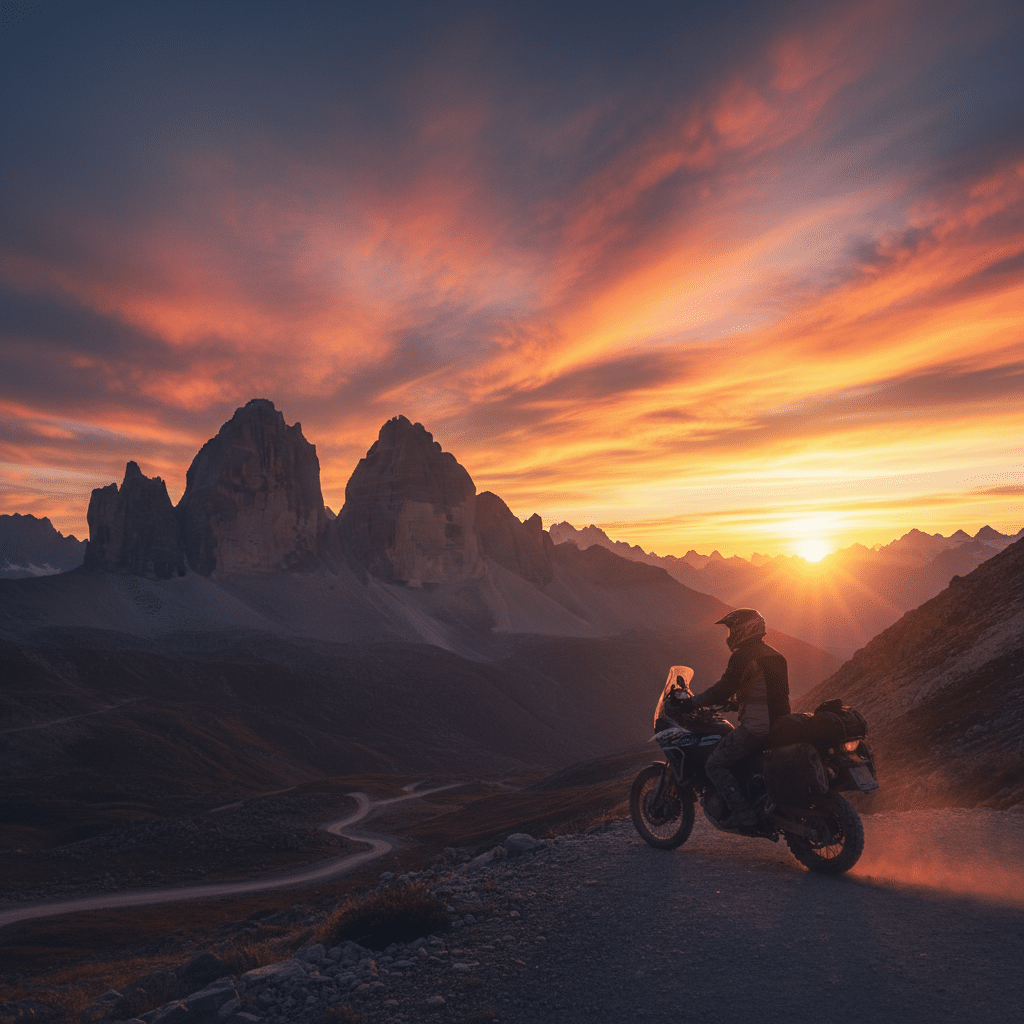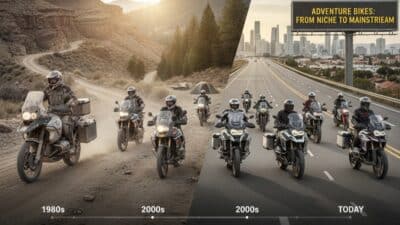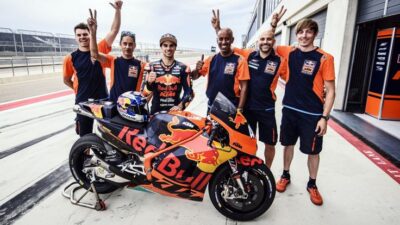Feel the rumble in your chest, hear the roar of the engine, and smell the crisp air of the open road – there’s an undeniable magic to motorcycle touring that calls to the soul. In recent years, we’ve witnessed an exhilarating phenomenon: the growth of motorcycle touring culture has exploded, transforming from a niche pursuit into a vibrant, mainstream passion. More riders than ever are throwing a leg over their machines, packing their bags, and chasing horizons, driven by an insatiable desire for freedom, adventure, and unparalleled connection with the world around them. This isn’t just about riding; it’s about living, exploring, and discovering new facets of yourself and the incredible landscapes that stretch before you.
The Irresistible Allure of the Open Road
What fuels this remarkable surge? At its heart, motorcycle touring offers an escape from the mundane, a visceral journey that engages all senses. Unlike traveling by car, a motorcycle immerses you directly in the environment. You feel the temperature changes, smell the pine forests or the sea air, hear the chirping of crickets or the crashing waves. This unfiltered experience creates a profound connection to the journey itself, making every mile a memory.
Consider the feeling of leaning into a sweeping curve on a mountain road, with breathtaking vistas unfolding around you. Or the camaraderie of pulling into a small town, helmet off, sharing stories with fellow riders over a hot meal. These moments forge indelible memories and friendships that transcend geographical boundaries. It’s a pursuit rooted in pure, unadulterated joy and a yearning for genuine experience. Studies indicate a rising trend in experiential travel, and motorcycle touring fits this perfectly, offering an authentic, hands-on adventure that digital life simply cannot replicate.

Technological Triumphs: Bikes Built for the Long Haul
The exponential growth of touring culture is also heavily influenced by advancements in motorcycle technology. Modern touring bikes are engineering marvels, designed for comfort, reliability, and performance over vast distances. Manufacturers have responded to rider demand with a plethora of specialized machines, from grand touring cruisers to agile adventure bikes.
Enhanced Comfort and Ergonomics:
Today’s touring motorcycles boast features unimaginable just a couple of decades ago. Ergonomically designed seats, adjustable windshields, heated grips and seats, and advanced suspension systems make long days in the saddle remarkably comfortable. Riders can cover hundreds of miles without the fatigue that once plagued extended journeys.
Power and Efficiency:
Engines are more powerful and fuel-efficient than ever, allowing for longer ranges between fuel stops and effortless cruising at highway speeds, even when fully loaded. The evolution of engine management systems ensures smooth power delivery and reduced emissions, making the experience more enjoyable and environmentally conscious.
Integrated Navigation and Infotainment:
GPS navigation systems are often seamlessly integrated into the dashboard, making route planning and discovery easier than ever. Bluetooth connectivity allows for communication with riding partners, phone calls, and music streaming, all controlled via intuitive interfaces. Some bikes even feature advanced rider-assistance systems like adaptive cruise control and traction control, further enhancing safety and reducing rider strain. These innovations have made cross-country treks not just possible, but genuinely luxurious for many riders.
The Rise of Community and Digital Connectivity
While motorcycle touring is often seen as a solitary pursuit, a significant aspect of its growth is the burgeoning sense of community. Riders are connecting like never before, both on the road and online.
Online Platforms and Social Media:
Dedicated forums, Facebook groups, Instagram hashtags, and YouTube channels are brimming with touring enthusiasts sharing routes, tips, gear reviews, and personal adventure stories. These platforms serve as invaluable resources for planning, troubleshooting, and finding like-minded individuals to ride with. Riders can easily discover local meet-ups, group tours, and charity rides, fostering a global network of kindred spirits.
Organized Tours and Rallies:
Motorcycle rallies, like Sturgis or Daytona Bike Week, have always been popular, but the rise of specialized touring events and guided expeditions has broadened the appeal. Companies now offer curated tours that handle logistics, accommodation, and route planning, allowing riders to focus solely on the experience. From exploring national parks to traversing continents, there’s an organized tour for every ambition.
Shared Experiences and Camaraderie:
The shared experience of overcoming challenges on the road, exploring new places, and simply enjoying the journey together creates strong bonds. This camaraderie is a powerful draw, turning individual rides into collective adventures. It’s not uncommon for strangers to meet on a tour and become lifelong friends, united by their shared passion for two-wheeled exploration.
Pros and Cons
| Pros | Cons |
|---|---|
| – Unparalleled freedom and connection to the environment. | – Higher exposure to weather elements. |
| – Deep immersion in local cultures and landscapes. | – Limited cargo capacity compared to cars. |
| – Strong sense of community and camaraderie among riders. | – Increased physical demands over long distances. |
| – Advanced technology enhances comfort, safety, and navigation. | – Higher risk of injury in accidents. |
| – Builds resilience, problem-solving skills, and self-reliance. | – Extensive planning required for complex trips. |
Gear Up for Glory: Essential Touring Equipment
As the culture expands, so does the market for specialized touring gear. Equipping yourself properly is paramount for safety, comfort, and enjoyment on long rides. Modern gear combines protection, functionality, and style, making it easier than ever to be prepared for any eventuality.
Protective Apparel:
- Helmet: Non-negotiable. Full-face or modular helmets with excellent ventilation and clear visibility are crucial for safety and comfort.
- Jacket and Pants: Made from abrasion-resistant materials like textile or leather, with CE-approved armor at key impact points (shoulders, elbows, back, knees, hips). Many feature waterproof membranes and removable thermal liners for versatility.
- Gloves: Provide grip, protection, and warmth or ventilation depending on the season.
- Boots: Sturdy, ankle-protecting boots are essential for foot and ankle protection and good grip on various surfaces.
Luggage Solutions:
The right luggage system transforms a day trip machine into a touring beast.
- Panniers (Side Cases): Hard-shell or soft-shell, these attach to the sides of the bike, offering substantial, secure storage.
- Top Case: Mounted behind the rider, often large enough for a helmet and other essentials.
- Tank Bags: Convenient for quick access to items like wallets, phones, and maps.
- Dry Bags: Essential for keeping clothes and electronics dry, especially on adventure rides.
Navigation and Communication:
Dedicated GPS devices designed for motorcycles, or smartphone apps like Rever and Calimoto, provide robust navigation. Bluetooth intercom systems integrate into helmets, allowing riders to communicate with passengers or other riders in their group, take calls, and listen to music.
Emergency and Repair Kits:
Being self-sufficient on the road is a hallmark of touring. A basic toolkit, tire repair kit, first-aid kit, and roadside assistance membership are vital. Knowing how to perform minor repairs, like patching a tire or how to check and adjust the chain tension on your motorcycle, can be a lifesaver. This dedication to preparedness speaks volumes about the commitment of touring enthusiasts.
Planning Your Epic Journey: From Dream to Reality
The magic of motorcycle touring begins long before the rubber hits the road—it starts with meticulous planning. A well-thought-out itinerary can transform a good trip into an unforgettable epic.
Route Planning:
This is where the adventure truly begins. Consider factors like desired scenery, road conditions, points of interest, and fuel stops. Online mapping tools, dedicated motorcycle apps, and even physical maps are invaluable. Are you aiming for a leisurely ride through wine country, or a challenging off-road adventure through remote trails? Each requires a different approach.
Accommodation:
From luxury hotels to rustic campsites, the choice of accommodation significantly impacts your trip. Many touring riders embrace camping, offering maximum flexibility and a deeper connection with nature. Booking ahead, especially during peak season, is often wise.
Budgeting:
Factor in fuel, food, accommodation, tolls, maintenance, and a contingency fund for unexpected expenses. Motorcycle touring can be as budget-friendly or as luxurious as you make it.
Motorcycle Preparation:
Before any long journey, a thorough inspection of your motorcycle is crucial. Check tires, brakes, fluids, lights, and chain. If you’re unsure, a professional service is recommended. Neglecting the importance of regular maintenance intervals for your motorcycle can quickly derail a trip. A pre-ride safety inspection ensures your bike is ready for the rigors of the road.

Beyond the Ride: The Economic and Cultural Impact
The rise of motorcycle touring culture isn’t just about individual adventures; it has a tangible economic and cultural footprint.
Tourism Boost:
Motorcycle tourists often venture off the beaten path, bringing vital revenue to small towns and local businesses that might otherwise be overlooked. They frequent local diners, stay at independent motels, and purchase souvenirs, contributing significantly to regional economies. In places like the Appalachian Mountains or the Pacific Coast Highway, businesses cater specifically to riders, from biker-friendly diners to specialized repair shops.
Cultural Exchange:
Riders interact with diverse communities, experiencing local customs, cuisines, and perspectives firsthand. This fosters cultural understanding and breaks down stereotypes. Motorcycle touring is a conduit for genuine human connection, transcending barriers through shared experiences on the road.
Environmental Considerations:
As the touring community grows, so does awareness of its environmental impact. Many riders are adopting more eco-conscious practices, such as choosing fuel-efficient bikes, minimizing waste, and respecting natural habitats. The industry is also responding with innovations in electric touring motorcycles, hinting at a greener future for long-distance two-wheeled travel.
Navigating Challenges and Embracing Resilience
Every epic journey comes with its share of challenges. Motorcycle touring, while incredibly rewarding, demands resilience, problem-solving skills, and a positive attitude.
Weather Woes:
Riding in inclement weather can be taxing. Rain, wind, extreme heat, or cold can test a rider’s endurance and gear. Proper preparation, including waterproof clothing and layers, is essential. Checking forecasts and being flexible with your route are key strategies.
Mechanical Mishaps:
Even well-maintained bikes can encounter issues on the road. A flat tire, a dead battery, or an unexpected mechanical failure can bring a trip to a halt. Carrying a basic motorcycle tool kit essentials and having roadside assistance coverage provides peace of mind. Learning basic troubleshooting can save the day.
Fatigue and Mental Fortitude:
Long days in the saddle can be physically and mentally draining. Proper hydration, nutritious food, adequate rest, and knowing your limits are crucial. It’s not a race; it’s a journey. Taking breaks to stretch, clear your head, and enjoy the scenery is part of the experience.

The growth of motorcycle touring culture is a testament to the enduring human spirit of adventure. It’s about more than just traveling; it’s about personal growth, connection, and the sheer joy of living in the moment. Each mile ridden is a chapter written, a memory forged, and a testament to the profound power of two wheels and an open road.
The Future is Wide Open
Looking ahead, the road for motorcycle touring culture seems limitless. As technology continues to evolve, bringing even more comfortable, safer, and connected bikes, and as more people seek authentic, meaningful experiences, the allure of the open road will only intensify. The community will continue to grow, sharing stories, inspiring new riders, and pushing the boundaries of what’s possible on two wheels.

If the call of the horizon whispers to your spirit, now is the perfect time to answer. Whether you dream of a weekend escape or a cross-continental epic, the world of motorcycle touring is ready to welcome you. Start with a solid plan, get your bike road-ready, embrace the community, and let the adventure unfold. The road is waiting.

Frequently Asked Questions
What exactly defines “motorcycle touring”?
Motorcycle touring refers to long-distance travel on a motorcycle, typically involving multiple days and covering significant mileage. It’s about the journey and exploration, often venturing through scenic routes, different regions, or even countries.
What kind of motorcycle is best for touring?
While you can tour on almost any bike, dedicated touring motorcycles, adventure bikes, and cruisers are generally preferred. They offer features like comfortable ergonomics, ample luggage capacity, powerful engines, and advanced suspensions designed for long-haul comfort and reliability.
Is motorcycle touring safe?
Safety is paramount in motorcycle touring. While motorcycles inherently carry more risk than cars, modern touring bikes come with advanced safety features, and riders equipped with proper protective gear and adherence to safe riding practices can significantly mitigate risks. Thorough planning and regular motorcycle maintenance are also key.
What are the essential items to pack for a motorcycle tour?
Key essentials include appropriate protective riding gear (helmet, jacket, pants, gloves, boots), waterproof layers, navigation tools, a basic tool kit, a tire repair kit, first-aid supplies, and adaptable luggage solutions. Don’t forget personal items, a charging bank, and plenty of water.
How do I plan my first long-distance motorcycle tour?
Start with a realistic destination and duration. Research your route for road conditions, fuel stops, and points of interest. Plan your accommodation, budget, and perform a thorough pre-ride inspection of your motorcycle. Consider starting with shorter, overnight trips to build experience before tackling longer journeys.
How has technology impacted motorcycle touring?
Technology has revolutionized touring by integrating advanced navigation systems, improving bike performance and fuel efficiency, enhancing rider comfort (e.g., heated grips, adjustable suspensions), and facilitating communication through Bluetooth intercoms and online communities. These advancements make touring safer, more comfortable, and more connected.
Can I go motorcycle touring solo or do I need a group?
Both solo and group touring are popular. Solo touring offers unparalleled freedom and introspection, allowing you to set your own pace and itinerary. Group touring provides camaraderie, shared experiences, and often a sense of added safety, but requires coordination among riders. Many riders enjoy a mix of both.



